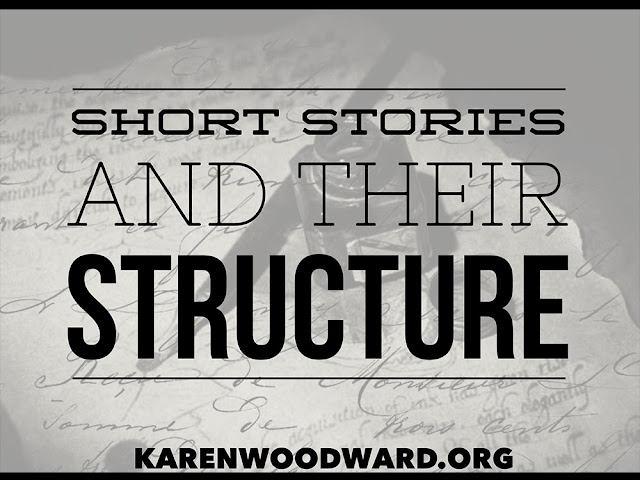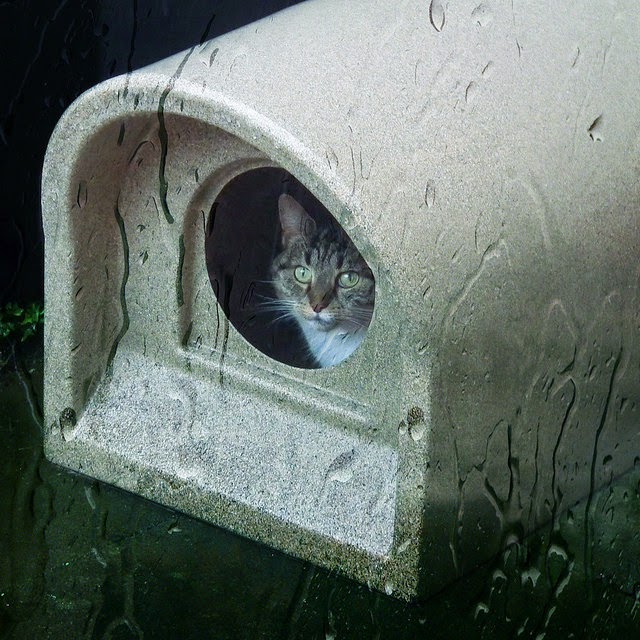“When I sit down to write a book, I do not say to myself, ‘I am going to produce a work of art.’ I write it because there is some lie that I want to expose, some fact to which I want to draw attention, and my initial concern is to get a hearing.” —George Orwell
Welcome to NaNoWriMo madness! Every day this month my plan is to blog about a key scene, one that pretty much any story of any genre has to include. Then I’ll take a closer look at how this scene, this structure, this general idea, is implemented in three popular genres: Action, Romance and Mystery. So far I've posted articles about the Inciting Incident and the Climax.
Today I'm going to talk about the Midpoint Crisis.
The Midpoint: Breaking It Down
I used to think that the Midpoint was primarily the place where the protagonist and antagonist confronted each other. I’ve changed my mind. It can be that, but it’s often more.
During the Midpoint the protagonist usually goes through what I’m going to call an enlightenment. She realizes that her understanding of the Special World of the Adventure is deeply flawed. She thought she knew what the Special World was like, what the capabilities of the antagonist are, but at the Midpoint she discovers she is oh-so-very wrong. As a result, the protagonist goes from being passive to active. She transitions from just reacting to the world to making plans and engaging with the antagonist.
What I just sketched in the above paragraph is generally true of most stories. Below, I go into specific variants. Note: Many of these points overlap. The difference, often, is one of emphasis.
What is it?
The protagonist goes from ignorance to knowledge.
At the midpoint the protagonist discovers just how ignorant she has been about the Special World. Often the protagonist finds out how much she doesn’t know and, in that moment of revelation, is put at a disadvantage. The antagonist likes to do a bit of (justified!) gloating about how he has pulled the wool over her eyes. Then the protagonist uses this knowledge—and a bit of good luck—to escape.
Or, sometimes, the protagonist figures the truth out on her own. The antagonist doesn’t show up personally, he sends his minions to set a trap for the protagonist, one he hopes will prove fatal to her. But the protagonist is clever and figures out the antagonist’s scheme just in time to escape.
The pot of gold at the end of the Midpoint’s rainbow is that now the protagonist knows the true nature of the Special World. Sure, they know they’re in deep doodoo, but still. Understanding how little you know is the beginning of wisdom. Perhaps the protagonist has gotten a late start but at least now she’s in the game.
The protagonist goes from reacting to circumstances to shaping those circumstances.
The protagonist goes from passive to active. Or perhaps that’s not the best way of putting it. It’s not as though the protagonist was a balloon drifting in the wind. When the antagonist makes a move on the protagonist she reacts, she resists, but that is the extent of her planning. The protagonist doesn’t initiate action. To be fair, perhaps she can’t because she doesn’t know the rules of the Special World yet and she keeps getting it wrong.
In any case, the rule of thumb is that before the midpoint the protagonist merely reacts to events. Something pushes her and she pushes back. She’s not thinking ahead, she’s not taking the fight to the enemy. She’s being swept along in a fast moving river, just keeping her head above water.
In the second half of the story, the protagonist makes a plan and does FINALLY take the fight to the enemy. She no longer merely reacts to the world around her, the crucible at the midpoint has transformed her into an active agent of change.
The protagonist goes through a point of no return.
The Midpoint irrevocably changes the protagonist with the result being (among other things) that she cannot go back to the Ordinary World, at least not until she sees her quest to the end.
As we’ve seen, what the protagonist learns at the midpoint changes her, transforms her. There is no going back. This is a point of no return. What she learn at the midpoint transforms her from someone who reacts to circumstances, someone who is buffeted by external forces, into an agent who can form a plan and act on it. She is now an agent of change.
The protagonist chooses self-sacrifice because of something larger than themselves (e.g. love).
Cage in Edge of Tomorrow is comfortable with his cowardice, his intimate, oh-so-reasonable concern for his own skin. But then he meets a girl, he falls in love, and at the Midpoint he puts her welfare before his own. It moves him from relying on her to save him to him taking the lead, to him trying to save her even if it means facing-off against the Big Bad all by his lonesome.
This all happens at the midpoint and it is this change, this internal transformation, that turns Cage from a passive, reactive, person to an active agent who makes plans and takes the fight to the enemy.
Discovery.
The midpoint can simply be a moment of discovery, where the hero oh-so-briefly gains the thing he seeks only to have it snatched away from him. (After all, if it weren’t, the story would be over!) Sometimes this discovery is external (the protagonist briefly acquires his object of desire) and sometimes it is internal (the protagonist discovers who she really is). More on this below.
Where is it?
As the name suggests, this scene occurs smack dab in the center of the story. In practical terms, it usually occurs somewhere between 45% and 55% of the way through.
How is the Midpoint connected to the protagonist’s desires?
The midpoint confrontation is intimately connected to the protagonist’s desires (both internal and external) and the protagonist’s goal. For example, in Edge of Tomorrow, Cage’s weakness is an excessive concern for his own skin—he’s a coward. At the beginning of the movie his goal is to get as far away from the front lines as he can. His challenge is to love something more than he loves himself, more than he loves life. This begins at the midpoint.
The Midpoint: An Example
I’ve already given a number of examples. Ideally I would simply describe a scene in some detail and then go on to analyze it but today I’m running short of time so my description will have to be briefer than I would like.
In the movie Malice, Andy Safian, played by Bill Pullman, initially wants nothing more than to live in marital bliss with his wife, Tracy, and have reliable plumbing. After Tracy loses her unborn baby as well as her ability to have children (Andy gives the doctor permission to perform the surgery thinking he is saving her life), she lets Andy know she blames him for her loss and leaves him.
At this point Andy’s world is shattered and his goal becomes to find his wife and reconcile with her. At around the midpoint, or a little bit after[1], Andy begins to realize he never knew Tracy. Everything she told him about herself was a lie. But he doesn’t yet know why she did it. What did she want from him? Why did she do this? Why him? He needs to know.
This midpoint scene occurs a bit late, about 65% of the way through the movie, when Andy talks to Tracy’s mother, a woman he had thought dead, and finds out the whole ugly unvarnished truth about the woman he married. It is a dramatic scene. After Andy learns the truth he is able to come up with a plan that will even the scales of justice.
Andy’s journey is primarily one of ignorance to knowledge. Andy was happy. He was! Sure his life was based on illusion, but he was still happy as a drunken clam. But this was based on ignorance of who his wife really was and what she wanted from him.
Also, Andy’s journey is one of self-discovery. None of us really know what we’re capable of, what we will choose, until we are put through the crucible of life’s pinch points. Walking through the fire of his wife’s betrayal reveals who Andy really is. How? Through his choices. Everything is stripped away from him and in that rawness he is forced to act. These are primal choices, choices that reveal character, choices that reveal (both to themselves and the world) who someone really is.
How the Midpoint is Implemented in Three Genres: Action, Romance & Mystery
Action Genre
I know I’ve used this movie as an example a time or two, but let’s take a look at Indiana Jones and Raiders of the Lost Ark, since it is the quintessential action movie. At the midpoint Indiana Jones acquires his goal, he finds and (however briefly!) takes possession of the ark. This is a moment of (external) Discovery.
Romance Genre
The midpoint is where the two lovers come together. Whatever differences they have are temporarily resolved, their disputes are temporarily suspended. Depending on the spiciness of the romance, this could be anything from handholding to spending the night in a creatively equipped dungeon.
Murder Mystery Genre
I’ve read ... wow. A lot of murder mysteries, and they’re all a bit different. I don’t want to give anyone the impression that there’s only one thing to do at the midpoint. That said, there is often a false resolution at the midpoint. It seems as though the mystery is solved, that the murderer has been found. But, of course, he hasn't! If he had this would be the end of the story.
Often it only seems to the police as though the case is solved. The sleuth knows it isn’t but no one will believe her.
This is one of those places where the B-story can come in to lend a helping hand. The resolution to the B-story can expose the falseness of the A-story, expose that the person the police think is the killer really isn’t. For instance, the suspected killer can be murdered!
Every post I pick a book or audiobook I love and recommend it to my readers. This serves two purposes. I want to share what I’ve loved with you, and, if you click the link and buy anything over at Amazon within the next 24 hours, Amazon puts a few cents in my tip jar at no cost to you. So, if you click the link, thank you! If not, that’s okay too. I’m thrilled and honored you’ve visited my blog and read my post. :-)
Today I'd like to recommend a book that has meant a lot to me over the years, The War of Art by Steven Pressfield. Have you ever thought, “Who am I kidding, I’ll never be able to do this!” If so, read this book! Here’s what Robert McKee had to say about The War of Art: “As I closed The War of Art, I felt a surge of positive calm. I now know I can win this war. And if I can win, so can you.”
That’s it for today! Tomorrow I’ll talk to you again about another key scene. Happy NaNo-ing!
Word count so far: 3,778 words.
Word count for today: 1,800 words.
Total words this month: 5,578 words.
Notes:
1. Or a little bit after the midpoint. There’s an important subplot that plays out in the first half of the movie that pushes the timing of the main arc back a bit.











